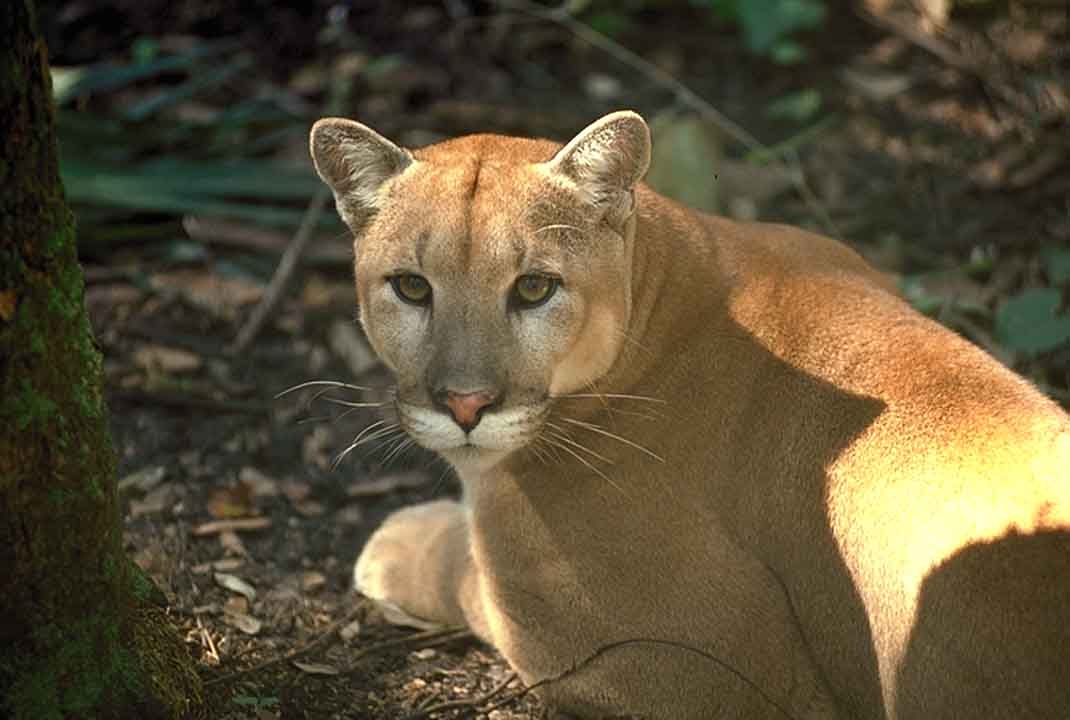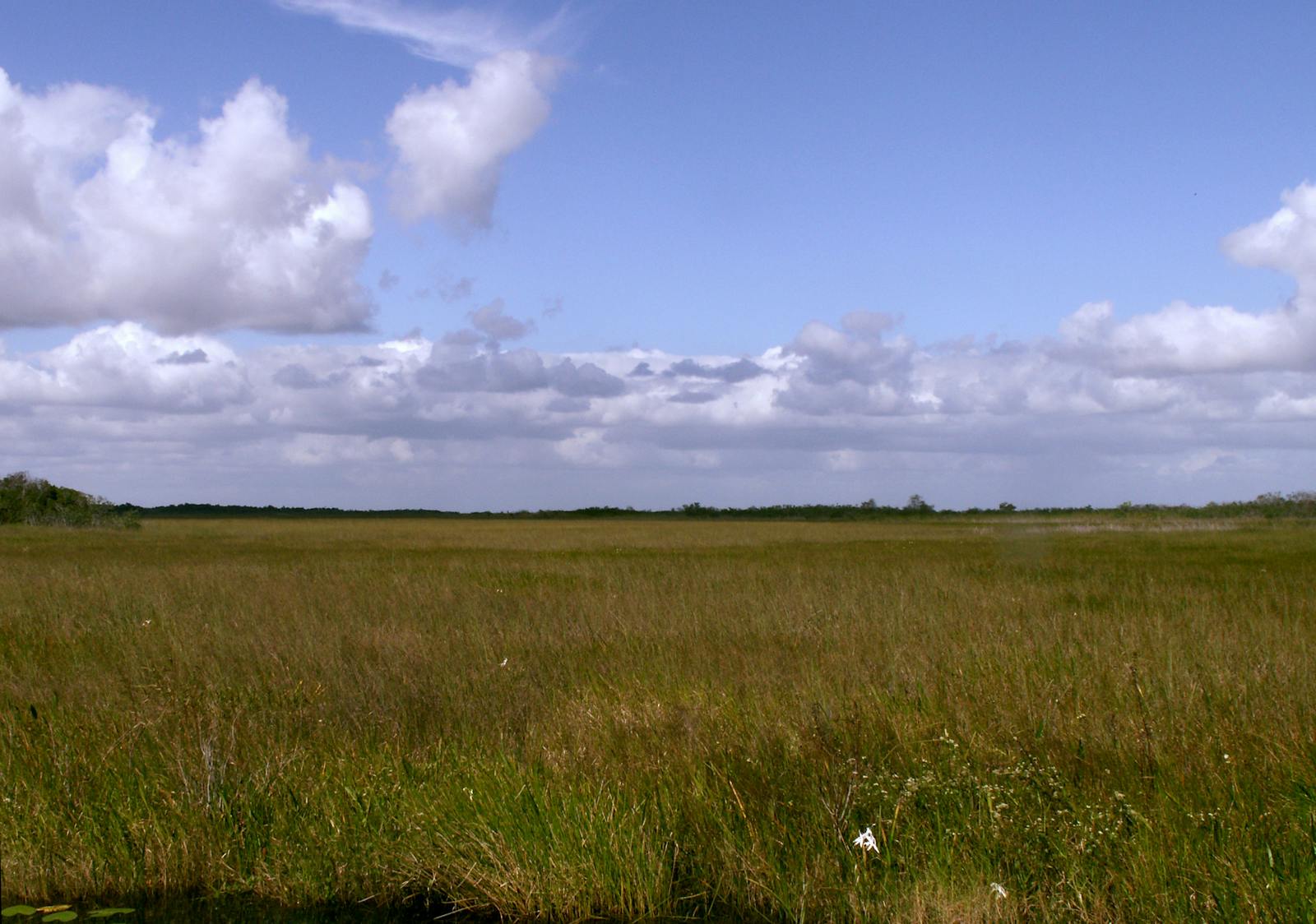Everglades Flooded Grasslands
The ecoregion’s land area is provided in units of 1,000 hectares. The protection goal is the Global Safety Net (GSN1) area for the given ecoregion. The protection level indicates the percentage of the GSN goal that is currently protected on a scale of 0-10.
Bioregion: Caribbean Islands (NT26)
Realm: Central America
Ecoregion Size (1000 ha):
1,989
Ecoregion ID:
581
Conservation Target:
40%
Protection Level:
4
States: United States
The Florida panther, also known as mountain lion, is a subspecies of North American cougar found within the Everglades Flooded Grasslands ecoregion. This big cat requires large unfragmented habitat, and hunts among the small cypress hammock islands of the otherwise inundated landscape.
This top predator has adapted to living in the complex of wet and dry habitats that make up the everglades, feeding primarily on medium sized mammals, reptiles and birds—its only natural enemy are the alligators and crocodiles. However, increasingly there are more unnatural enemies finding their way into this habitat, as escaped and released pets such as ball pythons reach giant proportions in the swamp.

The flagship species of the Everglades Flooded Grasslands ecoregion is the Florida panther. Image credit: Courtesy of the US Fish and Wildlife Service
The Everglades, located at the southern tip of peninsular Florida, is the most well-known wetland in the United States and one of the most distinct in the world. The Everglades is unique among the world's large wetlands deriving its water from rainfall. Its slow flow of water over shallow, broad tracts of marsh, inspired the nickname “River of Grass”. The Everglades also have a groundwater connection to Lake Okeechobee.
The Everglade’s climate has been classified as subtropical. Rainfall varies across southern Florida with inland marshes and Lake Okeechobee only receiving about 60% of the rainfall recorded in coastal areas. The most important climatic feature are the recurrent hurricanes that strike frequently from August through October and can cause extensive habitat destruction. Habitat ranges from ponds, sloughs, graminoid (grass-like wetlands), to forested wetlands. The most prevalent vegetation is sawgrass.
There are several forest patches composed of red bay, pond apple, and pond cypress trees often referred to as “tree islands” due to being surrounded by the sawgrass. Typical aquatic plants include various water lilies species of spatterdock, white water, and Nymphea Sp.
The extraordinary biological richness of the Everglades has been well-documented, particularly the spectacular wading birds, alligators, crocodiles, snail kites, and mangrove species. There are 70 recorded breeding bird species, 17 mammal species, 30 reptile species, and 14 amphibian species. For many of these species, sufficient water levels are crucial for successful breeding. Moving inland, the biodiversity of fauna declines towards the tip of the Florida peninsula. This is typical of peninsula areas as they become further removed from mainland populations.
The main conservation areas within the historic Everglades includes the Big Cypress National Preserve, the Everglades National Park, and the Arthur Marshall Loxahatchee National Wildlife Refuge. Other areas are managed with a focus on continued biodiversity conservation.
Despite protection of a significant portion of the historic Everglades and its recognition as an international biosphere reserve, the ecosystem faces severe threats from surrounding urban sprawl, ecologically unsound water management, agricultural development, invasion of exotic species, and fire. In the 1900s, a vast area of 2,830 km2 was converted to agriculture just south of Lake Okeechobee.
Today, sugar cane is the most commonly cultivated crop along with truck crops. The effects of fertilizer and pesticide application have reverberated throughout the ecoregion causing widespread degradation. The southern prairies have been irreversibly altered by farming practices. When abandoned, rather than returning to native assemblages, these areas were invaded by exotic species such as Brazilian pepper.
Natural water flow has been disrupted through the construction of canals and water management practices. To mitigate drought water levels were kept abnormally high and resulted in a decline of several plant communities including sawgrass. Also, excessive drainage has affected wading bird’s foraging areas and an increased number of fires. Poaching of deer, alligators, and panthers is an ongoing issue as well.
The priority conservation actions for the next decade are to: 1) change water flow delivery and management; 2) increase water quality standards, especially in response to agricultural runoff pollutants; and 3) initiate a significant investment in restoration projects.
Citations
1. E. Dinerstein, A. Weakley, R. Noss, R. Tipton, K. Wolfe. 2018. Everglades. https://www.worldwildlife.org/ecoregions/nt0904 Accessed November 28, 2018.
2. Gunderson, L. H., & Loftus, W. F. 1993. The Everglades. Biodiversity of the southeastern United States: lowland terrestrial communities, 199-255.



